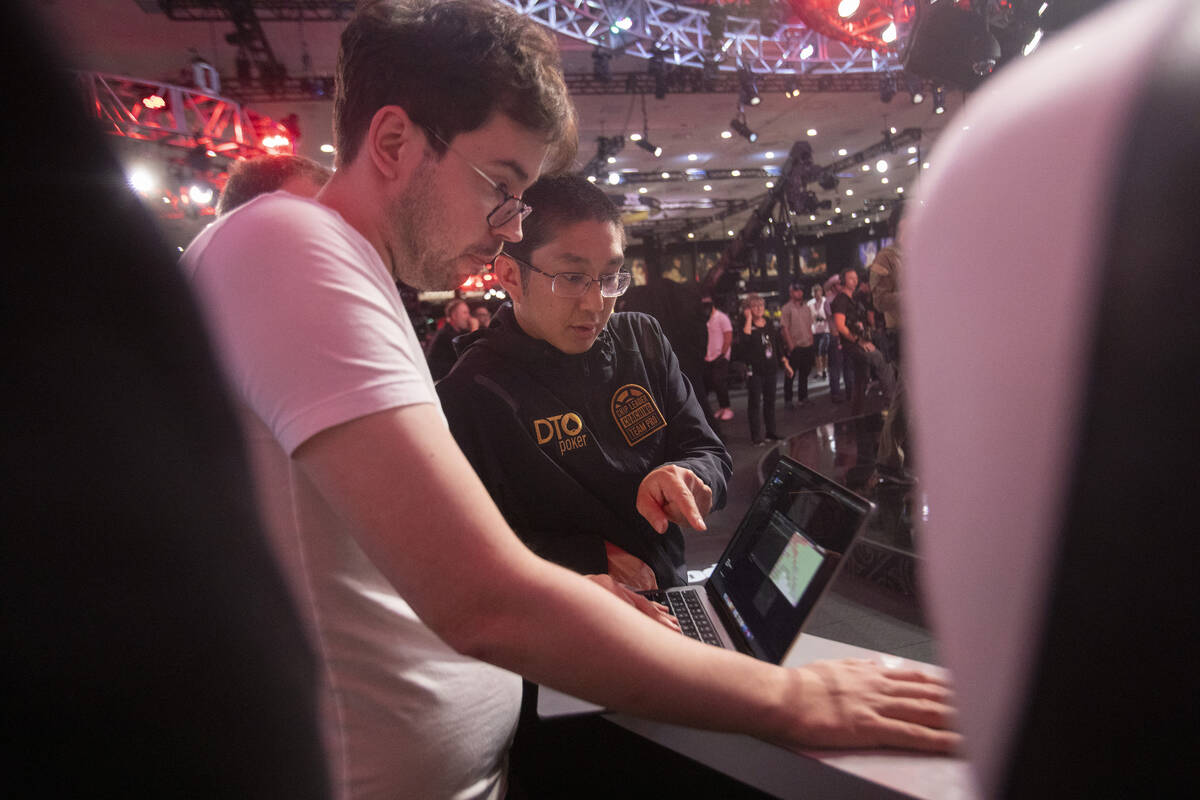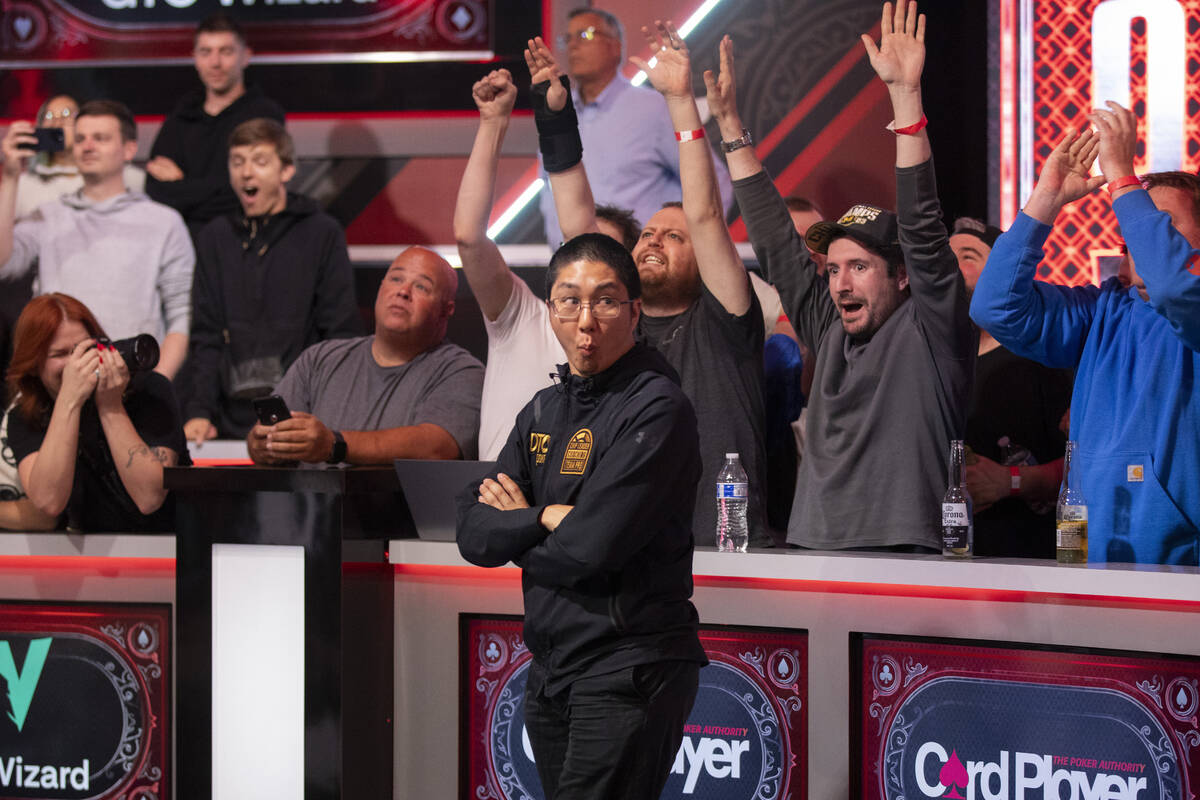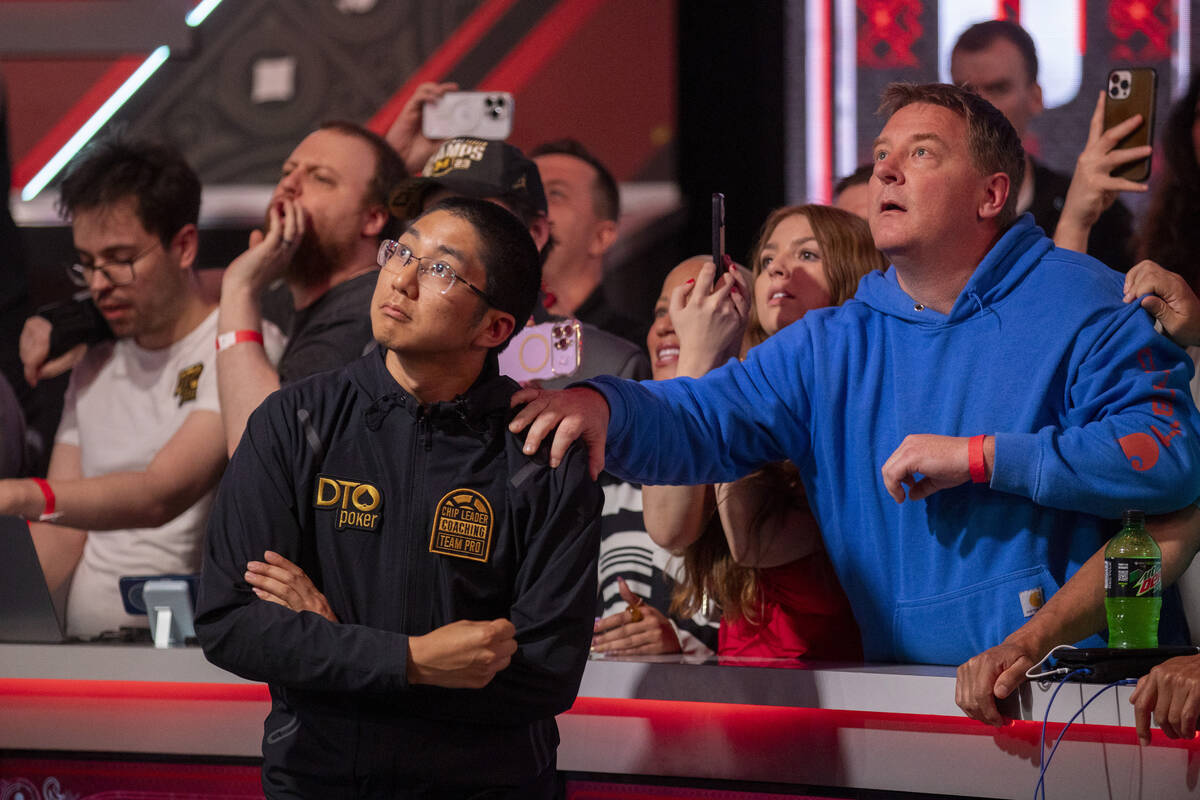Unethical, not illegal: What happened at WSOP Main Event final table?
Players can be disqualified at the World Series of Poker if they smell bad, based on Rule 40d about personal hygiene.
But there is nothing in the rulebook that prohibits a player from receiving post-hand coaching at the final table of the Main Event.
And it’s that gray area between legal and ethical where champion Jonathan Tamayo finds himself.
Tamayo, from Humble, Texas, outlasted a record field to win the $10,000 buy-in No-limit Hold’em World Championship on July 17 at Horseshoe Las Vegas. The 38-year-old professional poker player defeated amateur Jordan Griff of Scottsdale, Arizona, in a back-and-forth heads-up match for the $10 million first prize.
During the final table, Tamayo was seen on the PokerGO stream often consulting with friends and financial backers when he was not in a hand. Two of the most prominent members of his rail were 2015 Main Event champion Joe McKeehen and four-time WSOP event winner Dominik Nitsche, who had a laptop set up in plain sight.
It’s the laptop that has come into question, as Nitsche was widely believed to be using poker software to run simulations and then relay information to Tamayo about whether he played previous hands correctly.
Jonathan "@driverseati" Tamayo gets a DOUBLE UP by flopping a straight!
But has to check the sims immediately afterwards 😁 pic.twitter.com/LKmU6AbfFr
— PokerNews (@PokerNews) July 18, 2024
Nitsche owns DTO Poker Trainer, a poker coaching app. An unverified photo on X showed him running the solvers on his laptop during the final table, and he did not deny the accusation when confronted on social media. McKeehen appeared to be watching the PokerGO stream, which is delayed by an hour, on his phone.
While it’s not against the rules for Nitsche to use a poker solver since he was not in the tournament, several influential members of the poker community have spoken out against the practice and said they believe Tamayo had an unfair advantage.
“Joe and Dom actually helped. If they weren’t here, I likely do not win this tournament,” Tamayo said moments after his victory. “I might be out eighth. I might be out seventh. I might win this tournament, but a whole other bunch of good things would actually have to happen for that to happen. The way it went, it likely wasn’t going to happen like that.”
The main event is the moment the whole world watches poker.
Say you’re relatively new to the game - did seeing players on the biggest stage having a team on the rail crushing software to coach their own decisions make you more or less interested in playing poker?
Maybe…
— Mister_Keating (@Mister_Keating) July 18, 2024
What are poker solvers?
As poker continues to become more math-driven, a large number of No-limit Hold’em players now base their decisions on “game theory optimal.” Put simply, GTO is making the correct play for every situation. It’s perfect poker.
Poker solvers like Nitsche’s generate easy-to-look-at charts to show the correct play for almost any hand.
According to Rule 64c of the official WSOP tournament rules, “Participants are prohibited from using betting apps, gaming charts, or any poker information tool while involved in a hand.”
Officials also made an announcement before the start of each tournament this summer prohibiting the use of poker solvers at the table or in the tournament area and informing players they could be disqualified if found using GTO software.
Announced at start of each @WSOP event:
“We do ask you to please do not use any type of poker solvers at any point in time at the table or in the tournament area. If you’re found using one of these poker solvers, there’s a possibility of being disqualified from this tournament.” https://t.co/wrhOTvJb4Q pic.twitter.com/hsMjrj5iiL
— James Chen (@ChipBurglar) June 4, 2024
In this case, technically it was Nitsche using the software, not Tamayo. And that’s where the issue lies.
A WSOP spokesperson did not respond to a request for comment Tuesday.
“Based on my understanding of the rule, looking at solvers or charts in between hands isn’t allowed,” poker pro Daniel Negreanu wrote on X. “Someone else running solves in game and then telling you in between hands … also should not be allowed.
“No one at the table said anything as far as I know, but had they asked the floor for a ruling, I don’t see how they would have been allowed to continue.”
It’s common for players at the final table to speak with their rail for coaching, usually to acquire information about a hand from someone watching the stream. What makes Tamayo different was his camp’s apparent use of solvers and how open they were about it.
Every year I've watched the WSOP FT, the most prominent members of the community have been there with Laptops or/and headphones. Seiver, Deeb and everybody else we respect and trust. It was never an issue previously. Players would ALWAYS go to their rails between hands and get… pic.twitter.com/8XN1qrKtTl
— Patrick Leonard 🫡 (@padspoker) July 19, 2024
While no one has accused Tamayo of cheating, the information he gained from McKeehen and Nitsche would have helped shape his heads-up strategy against Griff. And to some, that GTO-assisted method of winning the bracelet gives the appearance that it’s not a level playing field for amateurs.
Nitsche clashed on social media with high-stakes cash pro Alan Keating, who said he was opposed to competing in tournaments if players are getting assistance from the rail. Numerous other prominent pros weighed in against the access to solvers.
Victoria Livschitz, co-founder of solver company Octopi Poker, told Poker.org she believed solvers should be banned from WSOP events.
“Regarding the WSOP main event winner getting ‘coached’: I think it’s not good for the game if players go to the rail and look at charts or sims or get input based on those. I believe that shouldn’t be part of the game,” two-time WSOP champion Fedor Holz wrote on X. “I hope the rules are being changed for next year.”
Runner-up speaks out
Griff appeared on poker influencer Doug Polk’s podcast Monday to address the controversy and said the optics of Tamayo frequently consulting his rail make it intimidating for amateur players.
The 30-year-old supply chain manager entered the WSOP Main Event with $47,192 in live tournament earnings. Tamayo was a four-time WSOP Circuit event winner with more than $2.3 million in career earnings.
“If I had 100 percent confirmation that they were there running sims, I may have mentioned something to the (tournament supervisor) then,” Griff told Polk.
Griff said he wasn’t sure how much his opponent benefited from the information provided by his corner. At one point during heads-up play, Griff had Tamayo all-in and was a coin flip away from winning the tournament. He settled for the $6 million second prize.
Griff said he was leaving it open when asked by Polk whether he would consider legal action.
“I mean it’s not like I would pursue it and be like, ‘Wow, if they disqualify him I’m the Main Event Champion!’” Griff said. “He won the heads-up battle whether he got assistance or not.”
Contact David Schoen at dschoen@reviewjournal.com or 702-387-5203. Follow @DavidSchoenLVRJ on X.

























